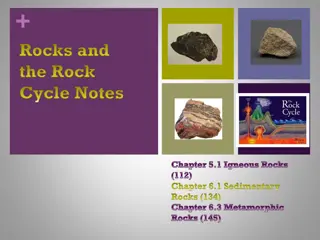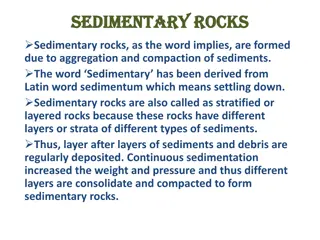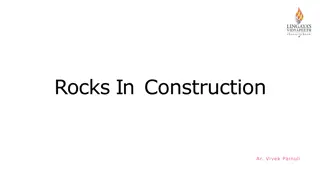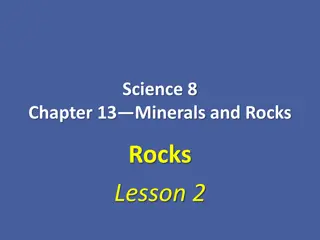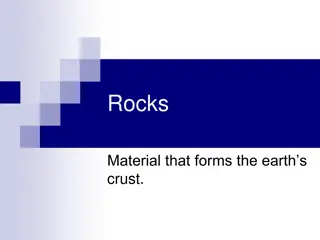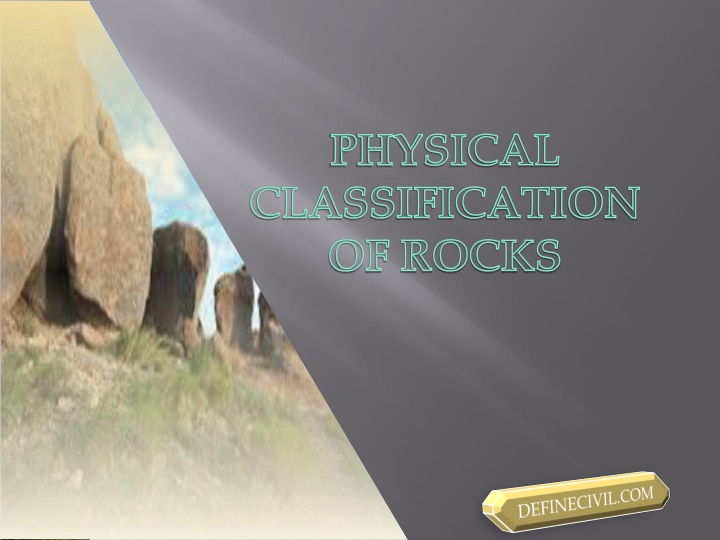
Physical Classification of Rocks
Explore the physical classification of rocks including unstratified, stratified, and foliated rocks with examples like granite, sandstone, and schists. Learn how these rock types differ in structure and formation.
Uploaded on | 1 Views
Download Presentation

Please find below an Image/Link to download the presentation.
The content on the website is provided AS IS for your information and personal use only. It may not be sold, licensed, or shared on other websites without obtaining consent from the author. If you encounter any issues during the download, it is possible that the publisher has removed the file from their server.
You are allowed to download the files provided on this website for personal or commercial use, subject to the condition that they are used lawfully. All files are the property of their respective owners.
The content on the website is provided AS IS for your information and personal use only. It may not be sold, licensed, or shared on other websites without obtaining consent from the author.
E N D
Presentation Transcript
PHYSICAL CLASSIFICATION OF ROCKS
PHYSICAL CLASSIFICATION OF ROCKS Unstratified Rocks Stratified Rocks Foliated Rocks
As the name suggests this class of rocks never shows distinct layers in their structure beside have a compact massive crystalline structure; that s why un-stratified rocks are usually called as massive rocks. As they are intact in massive units they can t be separated easily in layers or slabs.
GRANITE QUARZITE BASALT ROCK TRAP ROCK
Stratified rocks are opposite of unstratified physical class of rocks. Stratified rocks are composed of layered structures that are connected as a result of stratification and possess plane of cleavage or cleavage planes or bedding planes. These layers and stratum can be easily detached from one another along that plane.
Sandstone Slate Lime Stone
This classification of rocks is very common in case of metamorphic grout of rocks. Foliated rocks are formed in a layered structure that has been induced under lateral pressure. These rocks have a tendency of splitting along a plane of definite direction only which is not necessarily be in parallel direction to each other, which was the case of stratified rocks.
Schists Gneisses
Definecivil.com Fb/definecivil Twitter/definecivil




